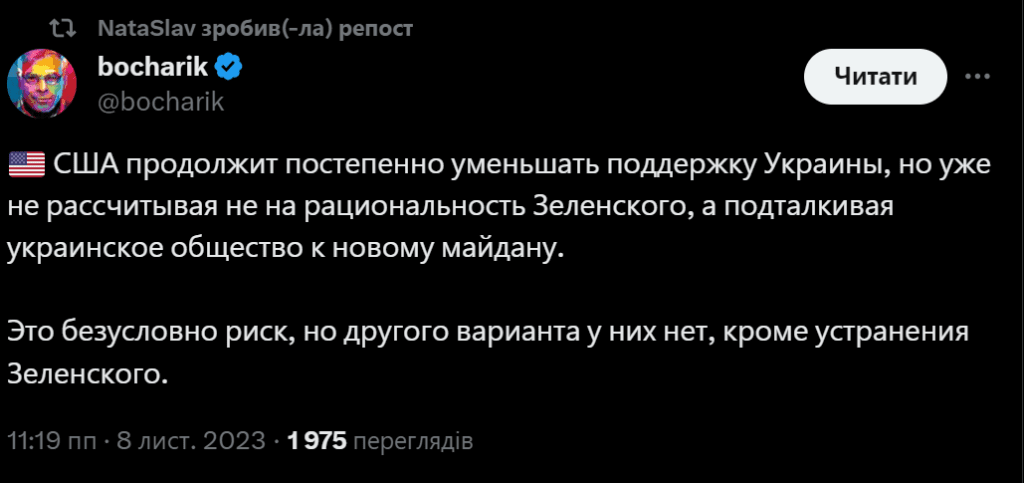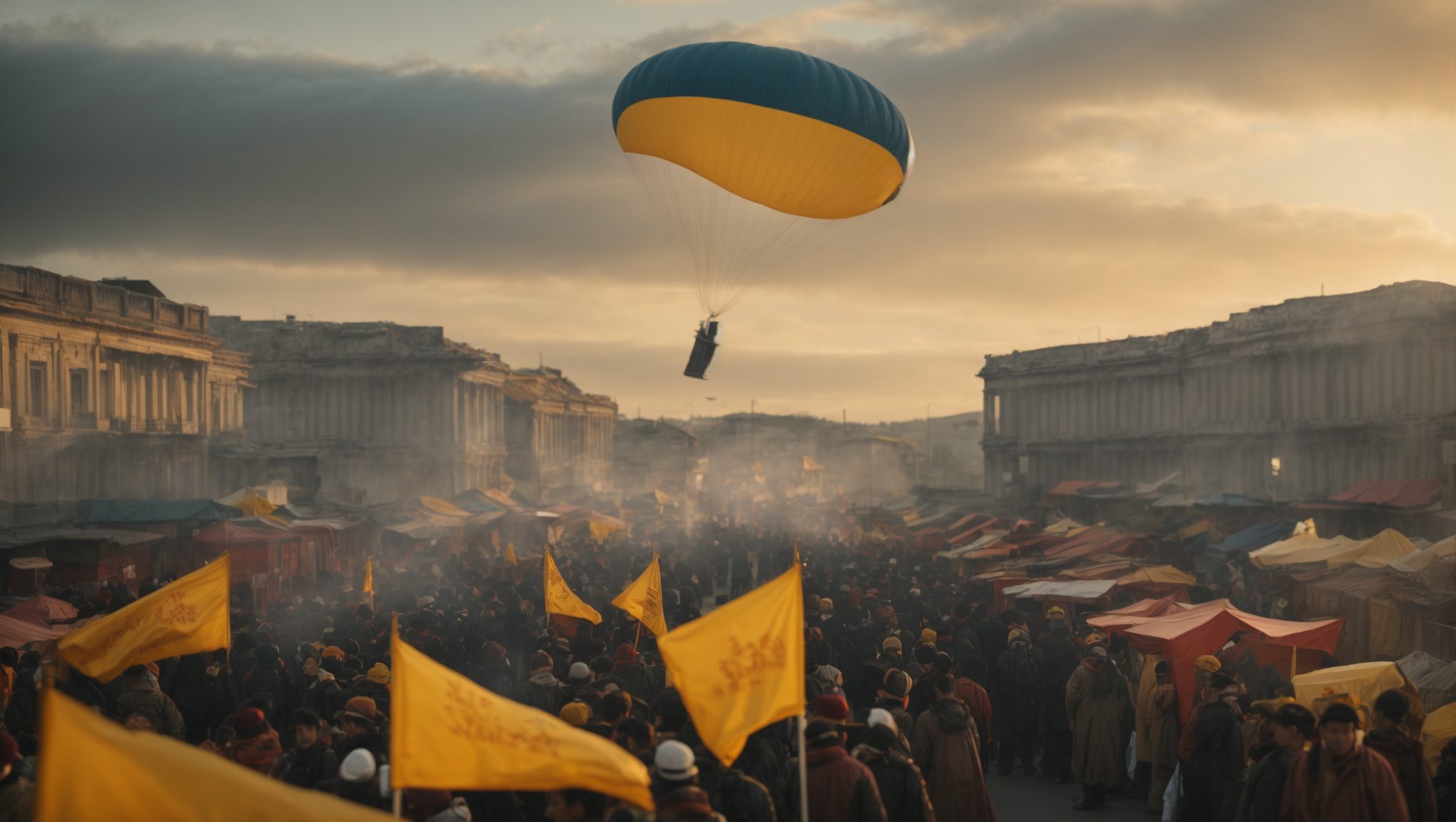The material was created as part of the project “Major Disinformation of the Month. Analysis and refutation”
Yesterday we published an article by our colleagues from online.uain which they cited information obtained in the security and defense sector of Ukraine, which can be briefly summarized as follows:
- Russia’s information attack on Ukraine, codenamed “Maidan-3,” was launched, curated by First Deputy Chief of Staff of the Russian Presidential Administration Sergey Kiriyenko, and ideologically led by Vladislav Surkov, one of the authors of the Novorossiya project.
- The goal set by Russian special services and propagandists is to destabilize political life, provoke protests and conflicts in Ukraine itself, and influence the international anti-Putin coalition.
- The main narratives and themes that Russia will push are: general war fatigue, corruption, stopping international aid, ineffective leadership and conspiracy theories, disruption of mobilization, and prisoner of war exchange.
- Separately, they will use topics inherent in Ukraine that create lines of division – primarily the language and religious issues.
- The tools will be protests in which Russian agents will be infiltrated to make them radical and non-peaceful.
- Another tool is political confrontation and attacks on the military and political leadership of the state, creating artificial or fictional conflicts.
A few days ago, we published a resonant storyin which we showed how Russia launched a fake that “the United States, with the help of Zaluzhny and Budanov,” is preparing a coup d’etat in February 2024. In fact, the material was the result of a systematic study of Russian hostile narratives that our team has been conducting since May 2022. The Osavulwhich we have been using for almost a year now thanks to the support of Osavul co-founder Dmitry Pleshakov. To whom we are very grateful!

There are tens and tens of thousands of similar messages on different platforms, in different languages and from different profiles with different degrees of influence.

Russia ties real events that cause conflicts in Ukrainian society or politics to its narratives. For example, the controversial decision on “military personal income tax”.

Of course, Russian propaganda did not ignore the tragedy with Valeriy Zaluzhnyi’s assistant, the transfer of Viktor Khorenko to another position, and Ukraine’s alleged military plans (as seen from the Kremlin).

All of this is “supported” by the testimony of “American intelligence officers,” although, as we showed in our research on the “military coup,” hyperlinks to quotes often lead directly to Sputnik (a division of Russia Today).

Some Ukrainian journalists, unfortunately, also fuel and provoke conflict moods. For example, over the past week, Yanina Sokolova provoked a conflict on linguistic grounds with her questions to Iryna Farion (this does not negate certain questions to Iryna Farion herself, especially in the context of publishing the personal data of her supporter from the occupied Crimea). After that, she asked a very incorrect question to Dmytro Marchenko, asking him whether he would like Valeriy Zaluzhny to become President of Ukraine, and received the expected answer “God willing. I would like it very much”.
At the same time, there could be no other answer, given both the personal relationship and the fact that the Commander-in-Chief of the Armed Forces is Dmytro Marchenko’s direct superior. On the other hand, the host’s further words, without mentioning Volodymyr Zelenskyy’s name, in which she claims that victory is impossible under the current President of Ukraine and that “the fish rots from the head,” and Dmytro Marchenko does not deny it, provoke the Supreme Commander-in-Chief to take certain personnel actions (for example, to remove Dmytro Marchenko from office) that are guaranteed to cause an uproar in Ukrainian society, where the general is extremely popular.

Other Ukrainian journalists go even further, publishing stories with the headlines “Zaluzhnyi canceled Bankova’s orders”, which are meant to create the impression that the situation in the country has already lost control.

Publications “from informed sources” continue to be published about the criminal prosecution of Zaluzhnyi and his inner circle. In fact, after the first attempt by Vladimir Ariev, it became a non-stop technology.

We can see that, in principle, after the initial insertion, the narrative of a “military coup” has been consistently supported by Russia in various media.
So will there be a Maidan-3?
In fact, and our colleagues have also written about this, attempts to organize it have not stopped since before the full-scale invasion. In 2015-2016, there was the first peak of activity. At the end of 2021, there was the second, when the so-called “anti-vaccinationists” and the pro-Russian part of the “entrepreneurs’ movement,” often without fully understanding what they were doing, systematically “rocked” the street in Kyiv. One can recall, for example, the “entrepreneurs” who protested at the American Embassy or the “anti-vaccinationists” who staged riots in the center of Kyiv.
Since May 2022, such attempts have also been made. First of all, the families of prisoners of war were being pumped up with theses that “relatives have been forgotten,” “Azov soldiers are not being replaced,” and so on. At the same time, it sometimes happened that the exchanges took place on the same day as the protests.
Now, as you know, Russia has completely blocked the exchanges. Despite the fact that Ukraine has to build another camp to hold Russian troops, the enemy is doing everything possible to avoid returning its own and handing over Ukrainians. Although the number of Russians in captivity is very large, and this is not evidence of the Stalinist position that “a Russian soldier will not surrender to captivity,” it is a game to strengthen protest sentiment in Ukrainian society.
Another hot topic is mobilization. There are several very extensive campaign networks in Ukraine that systematically work to disrupt mobilization processes. We have written about them many times, and it is worth adding that the peak of their activity falls in October-November this year and is happening right before our eyes.
The Russians are also obviously waiting for the weather conditions to deteriorate in order to try to cause maximum damage to the Ukrainian energy system and revive the talk about “while Ukrainians are without electricity, the government is making money by selling electricity to Europe.”
It is likely that November 21 was chosen as the next date on which the Russians will try to create chaos in Ukraine. On this day, Ukrainians traditionally gather in the center of Kyiv and other major cities to mark the anniversary of the Revolution of Dignity, and despite the ban on mass events during martial law, it is no longer in effect.
A series of rallies demanding that money be redirected from “repairs” to the needs of the Armed Forces, despite being organized by sincere patriots of Ukraine, “lifted the ban” on protests. And it’s likely that our colleagues from online.ua are right – on November 21, the enemy will try to escalate the situation again.
There can be several scenarios:
- direct terrorist attacks on mass gatherings of people and the presence of provocateurs who will direct hatred and rage not against Russia, but against the military and political leadership.
- a more moderate option, when the participants themselves provoke law enforcement. For example, an attempt will be made to break into the Presidential Office building, despite the obvious need for such actions today.
The enemy is benefiting from the general negative mood in Ukrainian society, which was caused by high expectations in the spring of 2023 and the lack of bright victories like a year ago. For many people, the letter written by Commander-in-Chief Valeriy Zaluzhnyi was also a “cold shower” because planning life with an eye to ending the war in 2023 and the war for an indefinite period are completely different things.
What to do?
Despite the obviousness of the answers, we need to update them once again. So, it is important to us:
- Do not trust any emotional and manipulative messages, do not spread calls for “Maidan”, “uprising against the criminal government”, “military coup”, etc. There are no conflicts in the country’s military and political leadership, and there is a working atmosphere of intense joint work for victory. Neither Zaluzhnyi, Budanov, nor anyone else is preparing a power grab.
- There is no reason to believe that our Western partners have lost confidence in the Ukrainian government or anyone in particular. All of their public statements indicate the exact opposite: Ukrainian weapons are not being stolen, the level of corruption is not critical, etc. Although, of course, they want us to intensify the fight against possible negative phenomena.
- Calls for protests made by unknown organizers with goals that are not fully understood are Russian provocations. If you are called to support the redistribution of the budget in favor of the army, it’s okay, but if you are called to “demolish this green scum,” it is very likely that Russia is behind it.
And our team continues its work to make it easier for you to distinguish fakes from reality.
Yuriy Honcharenko, CEO of InfoLight.UA Research and Analytical Group.


Leave a Reply